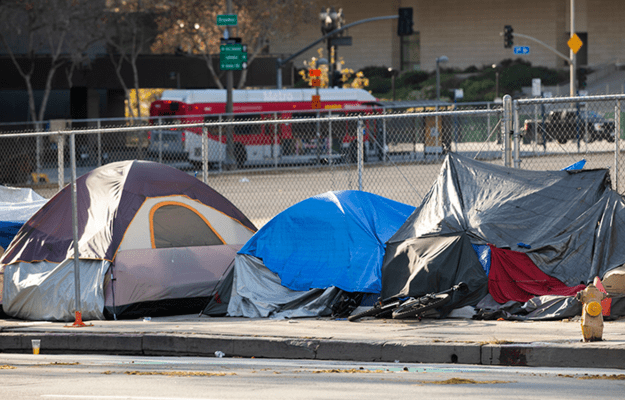
To Turn Around NYC’s Housing Authority, Look to Chicago
In a sign of the current state of the New York City Housing Authority (NYCHA), more than 14,000 tenants were without heat or heated water amid the recent polar vortex, when temperatures dipped to 10 degrees.
NYCHA’s infrastructure is in dire need of repairs, and poor management has compounded these problems. Recently, in an attempt to address this situation, the federal government took more control of NYCHA. In the agreement between Mayor Bill de Blasio and the US Department of Housing and Urban Development (HUD), a federal monitor will oversee operations, and the city will commit to spending $2.2 billion over the next decade to repair aging buildings.
But the agreement will do little to improve the standing of NYCHA or help the thousands of low-income New Yorkers who rely on it for housing assistance in one of the most expensive markets in the country.
How the agreement falls short
- No new federal funding
Public housing across the country has seen crumbling infrastructure and underinvestment for the past 20 years. NYCHA’s plight is part of this broader crisis, as aging high-rise buildings with complex heating, plumbing, and electrical systems, face mounting repairs.
Yet the new agreement includes no new federal funding to address these problems, even though NYCHA faces a $34 billion capital needs backlog. The new funding pledged by the city will not stretch far to address this crisis.
On top of the large price tag for fixes, leaders should also consider the other costs the city will have to absorb as NYCHA’s problems mount. When elevators get stuck or health problems arise because of mold or lead paint, local first responders and hospitals must step in. Nothing in the agreement speaks to this issue.
- Unclear turnaround plan
As part of the agreement, the interim director of NYCHA will be replaced by a federal appointee. The current leader was appointed by the mayor less than a year ago to fix management problems that led to lead paint exposure, among other issues.
But without adequate funding and a plan to fix these problems, it’s unclear how this personnel change will add any value to NYCHA tenants and low-income New Yorkers.
Chicago offers lessons for turning around troubled public housing agencies
In 1995, the Chicago Housing Authority (CHA) faced a similar crisis of deteriorating buildings and ineffective management when it entered federal receivership.
HUD sent a team, including the assistant secretary and other experts, to lead a comprehensive turnaround effort. The team cleaned up the agency’s books, hired new managers, improved systems, and laid the groundwork for the Plan for Transformation that ultimately transformed the agency and its housing. HUD also provided resources: technical assistance, experts, funds for research and performance monitoring, and funds for management and capital needs.
For his part, then-Mayor Richard Daley refused to agree to reverting the agency to local control without a commitment from HUD to provide more than $1 billion in federal funds for replacing developments with mixed-income housing and for rehabilitating other properties. The city then committed its own substantial funds for infrastructure and neighborhood amenities, as well as prompting local philanthropy to provide hundreds of millions of dollars for special projects, jobs programs, and research and monitoring.
Even with all that effort, it took more than a decade to truly transform CHA from the most troubled housing authority in the country to the ordinary bureaucracy it is today.
Chicago’s story offers lessons on how a public housing authority in crisis can be turned around, but NYCHA’s situation is very different.
- It’s a much larger problem. When HUD took over CHA in 1995, the agency had 44,000 units of public housing and about 15,000 vouchers while NYCHA has close to 200,000 public housing units.*
- We have a different political climate. In 1995, there was strong bipartisan support on Capitol Hill for addressing the problems of troubled public housing.
- The sequester has hit hard. Chicago’s turnaround occurred 15 years before the Budget Control Act (known as “the sequester”) that steadily squeezed funds for public housing, leaving NYCHA and other housing authorities without the resources to address major repairs.
Addressing NYCHA’s situation now and preserving this essential housing resource will require a coordinated effort and investment from HUD, the city, and the state. As NYCHA’s residents continue to suffer, all levels of government must follow through on their commitment to these vulnerable New York residents.
This post was originally published on Urban Wire, the blog for the Urban Institute.
Photo by Zangrilli Andrea/Shutterstock


